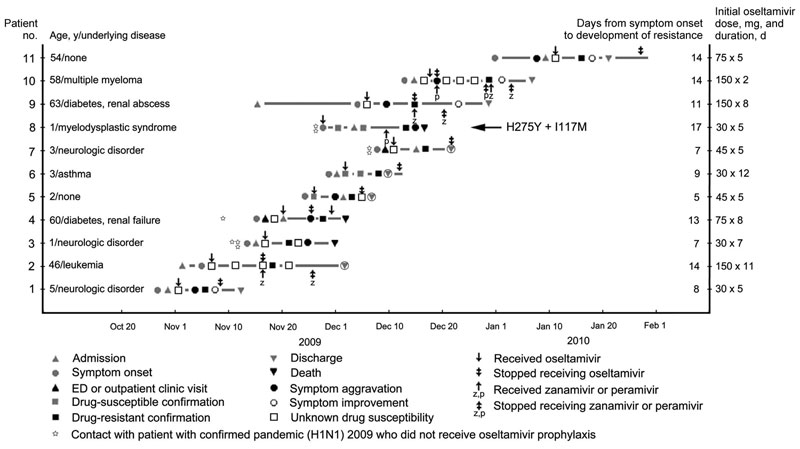Volume 17, Number 4—April 2011
Dispatch
Drug-Resistant Pandemic (H1N1) 2009, South Korea1
Figure

Figure. Clinical course and outcome of 11 patients with oseltamivir-resistant pandemic (H1N1) 2009, South Korea. Symptom aggravation was defined as influenza-related symptoms that worsened regardless of new infiltrations seen by chest radiography. Symptom improvement was defined as influenza-related symptoms (nasal stiffness, sore throat, cough, myalgia, fatigue, headache, and fever) that were absent or mild. All doses of oseltamivir were given 2×/d. ED, emergency department.
1Presented in part at the 50th Interscience Conference on Antimicrobial Agents and Chemotherapy; 2010 Sep 12–15; Boston, Massachusetts, USA (late-breaker posters session, abstract V-448c).
Page created: July 25, 2011
Page updated: July 25, 2011
Page reviewed: July 25, 2011
The conclusions, findings, and opinions expressed by authors contributing to this journal do not necessarily reflect the official position of the U.S. Department of Health and Human Services, the Public Health Service, the Centers for Disease Control and Prevention, or the authors' affiliated institutions. Use of trade names is for identification only and does not imply endorsement by any of the groups named above.